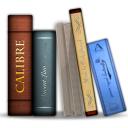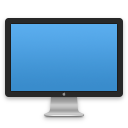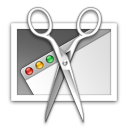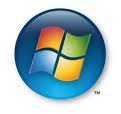How to use calibre with a network drive? With NFS!
April 18, 2015 5 Comments
 calibre is not exactly the program that will win a beauty contest, but functionally it is ok.
calibre is not exactly the program that will win a beauty contest, but functionally it is ok.
Code is Poetry (My technical discoveries. Hacks. News. Reviews)
April 18, 2015 5 Comments
 calibre is not exactly the program that will win a beauty contest, but functionally it is ok.
calibre is not exactly the program that will win a beauty contest, but functionally it is ok.
April 18, 2015 Leave a comment
I recently reactivated my backup Mac Mini as a server; for convenience, I installed the OS X Server package.
March 11, 2015 Leave a comment
 In multi-screen setups, for example a laptop with an external monitor, OS X prefers the laptop screen, which makes things a bit weird when using mainly the big screen, especially when having to confirm message boxes in the other screen.
In multi-screen setups, for example a laptop with an external monitor, OS X prefers the laptop screen, which makes things a bit weird when using mainly the big screen, especially when having to confirm message boxes in the other screen.
June 27, 2014 Leave a comment
![]() One of the first questions I had when evaluating iBooks, was “How do I get my PDFs back from iBooks, if needed?”. The answer is pretty simple, and very Apple like: “You just drag them from iBooks to your folder of choice”.
One of the first questions I had when evaluating iBooks, was “How do I get my PDFs back from iBooks, if needed?”. The answer is pretty simple, and very Apple like: “You just drag them from iBooks to your folder of choice”.
May 9, 2012 12 Comments

Soon after switching to Mac I discovered that one of the myths that I lived with for many years, i.e. that Adobe Acrobat Reader is mandatory in order to view PDF documents, is no longer true.
October 13, 2011 Leave a comment
 There are few EDA programs that run on Mac OS X. One of them is CadSoft EAGLE PCB & Schematic software (v5), but unfortunately the integration with Mac OS X is minimal.
There are few EDA programs that run on Mac OS X. One of them is CadSoft EAGLE PCB & Schematic software (v5), but unfortunately the integration with Mac OS X is minimal.
September 4, 2011 1 Comment
 There are moments when even Mac OS X has problems and needs to be started in special configurations.
There are moments when even Mac OS X has problems and needs to be started in special configurations.
July 2, 2011 Leave a comment
 One of challenges many developers face is to be able to maintain different (old) products, built with various versions of the development tools, some quite obsolete.
One of challenges many developers face is to be able to maintain different (old) products, built with various versions of the development tools, some quite obsolete.
The right answer to this challenge is to have different virtual machines with the complete environment. Unfortunately, due to crazy licensing issues, currently running Mac OS X as a virtual guest on a Mac OS X host is not allowed (according to some rumours, Lion will change this).
The next choice is to keep multiple versions of the development tools installed in different folders, but in this case extra care should be taken to avoid messing the PATH.
July 2, 2011 Leave a comment
 Most of the time, hiding the system or configuration files is ok, it reduces the clutter and also the risk of inadvertently removing/changing them.
Most of the time, hiding the system or configuration files is ok, it reduces the clutter and also the risk of inadvertently removing/changing them.
However, there are moments when we need to change, for example, the PATH, or some shell aliases, or some startup configurations. In other words, we need to edit such hidden files.
December 29, 2010 Leave a comment
Minicom is a menu driven communications program. It emulates ANSI and VT102 terminals. The current version is 2.4, from 2009-12-20.
October 5, 2010 1 Comment
 I recently decided to make some Mac OS X installation tests, and, to avoid destroying the original Apple Install DVDs, I thought it would be great to first make some backups of the disks.
I recently decided to make some Mac OS X installation tests, and, to avoid destroying the original Apple Install DVDs, I thought it would be great to first make some backups of the disks.
And so I discovered the intricacies of the Apple hybrid disks…
October 5, 2010 Leave a comment
 It’s this outstanding attention to details one of the reasons I like the Apple products.
It’s this outstanding attention to details one of the reasons I like the Apple products.
I was using the Mac OS X Grab application for long time already, but it was just recently that I discovered the special keyboard shortcuts, more precisely the differences between using them and directly using the Grab application.
October 4, 2010 Leave a comment
 NTFS support is available in Mac OS X for some versions already, but only reading from NTFS is currently (v10.6.4) possible.
NTFS support is available in Mac OS X for some versions already, but only reading from NTFS is currently (v10.6.4) possible.
Like it or not, there are moments when we need to share files with other non Apple computers (Windows, Linux). I dedicated a slim USB powered disk for this and I thought that formatting it as FAT32 is the best option in terms of portability. As long as you have only small files, FAT32 is fine, but if you need to transfer files larger than 2 GB (like .iso images, movies), FAT32 is no longer appropriate, and a solution based on NTFS needs to be considered.
October 4, 2010 Leave a comment
 First of all, this post is not about making illegal DVD copies. My goal is to transfer my DVD library from optical disks to a hard disk (ok, a large one), the same as I did with my music CD library, entirely transferred to iTunes. Well, not exactly the same, since the DVDs are significantly more complex than audio CDs.
First of all, this post is not about making illegal DVD copies. My goal is to transfer my DVD library from optical disks to a hard disk (ok, a large one), the same as I did with my music CD library, entirely transferred to iTunes. Well, not exactly the same, since the DVDs are significantly more complex than audio CDs.
The classical audio CDs structure is very simple, just a list of tracks, without any additional information, so ripping it did not loose any content.
On the other side, DVDs usually have a very complex structure, with multiple audio tracks, multiple subtitles, menus, special features, photos, etc.
The common approach when ripping DVDs is to preserve only the main video and audio streams and repack everything using a very high compression algorithm to produce a DivX or MKV stream. For my taste, this approach is not acceptable, due both to quality issues and missing content.
A true backup should preserve the full content and the quality; the only solution I know is to use a disk image format, like ISO.